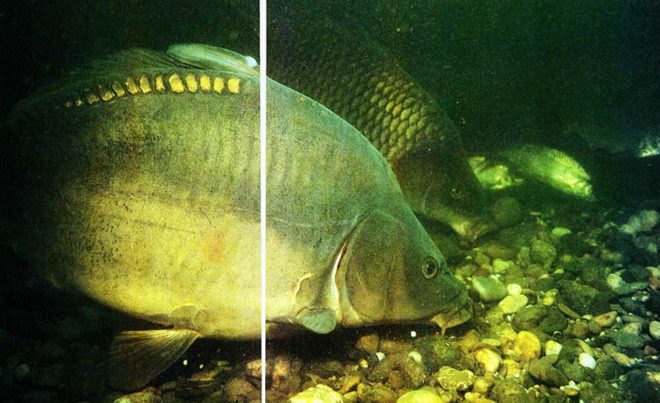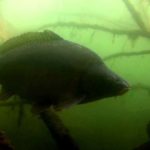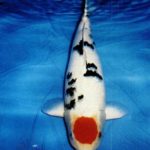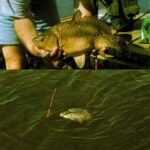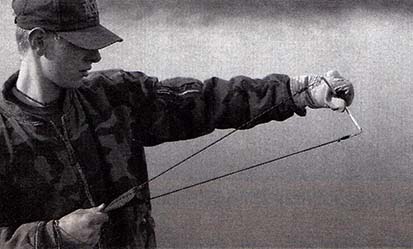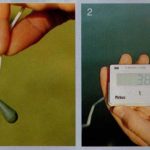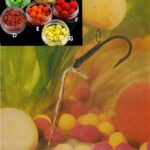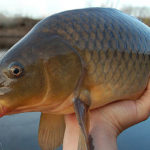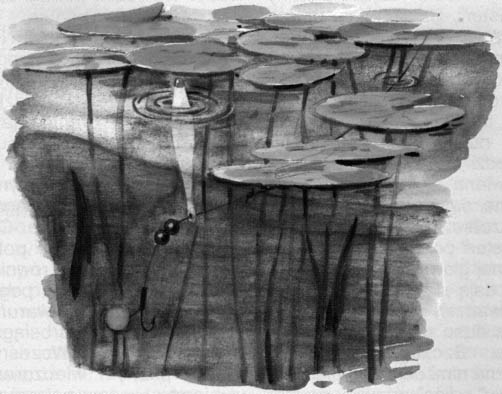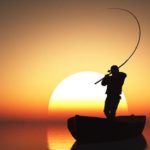 Karpie nie zawsze są aktywne. Gdy poczują się zmęczone zbyt długim żerowaniem, przeważnie zatrzymują się na odpoczynek w przytulnych i bezpiecznych miejscach. Jak znaleźć takie miejsca oraz jakie przynęty są skuteczne na nieżerujące karpie.
Karpie nie zawsze są aktywne. Gdy poczują się zmęczone zbyt długim żerowaniem, przeważnie zatrzymują się na odpoczynek w przytulnych i bezpiecznych miejscach. Jak znaleźć takie miejsca oraz jakie przynęty są skuteczne na nieżerujące karpie.
Jeżeli karpie nie są aktywne, to przeważnie zatrzymują się na odpoczynek w miejscach, w których czują się bezpiecznie oraz mogą w spokoju strawić zjedzony wcześniej pokarm. Po namierzeniu takiego miejsca opłaca się w nim powędkować, gdyż wbrew pozorom, nawet nieżerujące karpie lubią sobie od czasu do czasu zjeść coś na deser.
Wędkarze karpiowi z własnego doświadczenia wiedzą kiedy i gdzie karpie zaczynają żerować, a w związku z tym, jak najłatwiej je złowić. Po znalezieniu ulubionego żerowiska karpi samo wędkowanie jest całkiem proste. Latem i jesienią karpie prawie codziennie szukają pokarmu dokładnie w tych samych miejscach oraz o tej samej godzinie.
W dużych jeziorach zaporowych ryby te żerują przeważnie przez całą noc, natomiast w rzekach także w ciągu dnia, a przede wszystkim wcześnie rano. W jeziorach powyrobiskowych karpie równie chętnie pobierają pokarm o świcie, jak i pod sam wieczór.
Wiele zależy od presji wędkarskiej. Dość dobrze znam kilka jezior powyrobiskowych, w których już od wielu lat bardzo intensywnie się wędkuje, co doprowadziło do sytuacji, że złowienie karpia w jakimś popularnym miejscu, możliwe jest tylko w środku nocy.
Kilka miesięcy temu nad jedno z tych jezior przyjechało dwóch wędkarzy w ogóle nie znających tego łowiska. Zaczęli wędkować w miejscu, które już od dawna omijali wszyscy miejscowi wędkarze gdyż jeszcze nigdy nikomu nie udało się tam złowić karpia. Miejscowi śmiali się nawet po cichu z przyjezdnych, jednak nie trwało to zbyt długo, ponieważ „nowi” już pierwszego dnia złowili kilka dużych karpi, natomiast miejscowi wyjadacze nie mieli w tym czasie nawet jednego brania. Goście łowili na kilka kulek proteinowych w takim miejscu, w którym nocą nie było ani jednej ryby, natomiast w ciągu dnia karpie prawdopodobnie zjawiały się tam na wypoczynek. Wszyscy wędkarze szukają miejsc żerowania karpi, natomiast rzadko kto szuka miejsc, w których ryby odpoczywają. Po pierwsze dlatego, że większość wędkarzy nie wie gdzie ich szukać, a oprócz tego uważają, że skoro karpie nie pobierają w takich miejscach żadnego pokarmu, to tym samym nie można złowić ich na wędkę.
Uważam jednak, że każdy, kto dokładniej przyjrzy się swemu łowisku, a następnie choć trochę popracuje głową, dość szybko i w miarę precyzyjnie zacznie typować miejsca, w których stoją karpie między kolejnymi posiłkami. Ryby te dość dobrze biorą wędkę nawet w czasie poobiedniej sjesty, na co najlepszym dowodem są wspomniane już wyniki dwóch przyjezdnych wędkarzy.
Pomiędzy posiłkami
W małych jeziorach zaporowych karpie szukają raków, małży i innego pożywienia na płyciznach jedynie nocą. W ciągu dnia stadka ryb stoją w znacznej odległości od brzegu i to przeważnie na większych głębokościach (na przykład w starym korycie rzeki). W dużych jeziorach zaporowych karpie zachowują się prawie tak samo. W akwenach tych, mając do dyspozycji znacznie więcej naturalnych źródeł pokarmu, nie muszą zbyt długo pływać, aby zaspokoić głód. Przeważnie stoją na głębokości czterech, pięciu metrów i tam też szukają pożywienia. Na dzień znikają gdzieś za horyzontem i uspokajają się dopiero wtedy, gdy są już bardzo daleko od brzegu i na głębokości przynajmniej siedmiu metrów.
Po ustaleniu gdzie karpie spędzają dzień, możemy z powodzeniem sprowokować je do dość dobrych brań. Im więcej ryb, tym łatwiejsza jest stymulacja ich zachowania. A właśnie w dużych akwenach karpie żyją w większych grupach. W takich właśnie wodach złowiłem większość swoich karpi, przeważnie na duże (od 20 do 30), pływające nad dnem kulki proteinowe. I to bez nęcenia!
Przynętę uatrakcyjniam poprzez dodanie do ciasta trochę większej ilości środka smakowego lub maczając gotowe już kulki proteinowe w aromatycznym oleju.
Tuż pod nosem
Jeżeli woda jest czysta, prawie zawsze łowię na jasne kulki proteinowe, a tym samym prowokuję karpie także bodźcami optycznymi.
Bardzo ważne jest podawanie przynęty jak najbliżej odpoczywających karpi, gdyż tylko w ten sposób można zaciekawić ryby lub wywołać u nich odruch konkurencji pokarmowej. Przynętę sprawdzam co godzinę, a zestaw zarzucam za każdym razem odrobinę bliżej niż poprzednio.
Czasami opłaca się też zupełnie odmienna technika prowokowania ryb, na przykład poprzez zanęcenie zanętą drobnoziarnistą (partykularną). Bardzo często udaje się bowiem wywołać tym prawdziwą reakcję łańcuchową: jedna ryba próbuje, druga zaczyna robić to samo i nim upłynie minuta-już żerują wszystkie obecne w łowisku karpie.
Co by jednak nie mówić, jest to dość ryzykowna metoda. Oprócz tego, że można dużo zyskać, można też wszystko stracić. A jeśli nawet uda się sprowokować karpie do żerowania, to i tak trwa to bardzo krótko. Ryby nie zdążyły bowiem jeszcze strawić lub w ogóle nie zaczęły trawić zjedzonego wcześniej pokarmu.
Do prowokowania karpi chętnie używam kulek proteinowych.
Przynęta ta jest lepiej wyjadana, gdy podajemy ją z zanętą drobnoziarnistą. W miejscach odpoczynku ryb sama kulka proteinowa powinna jednak pływać około dwóch centymetrów nad dnem.
